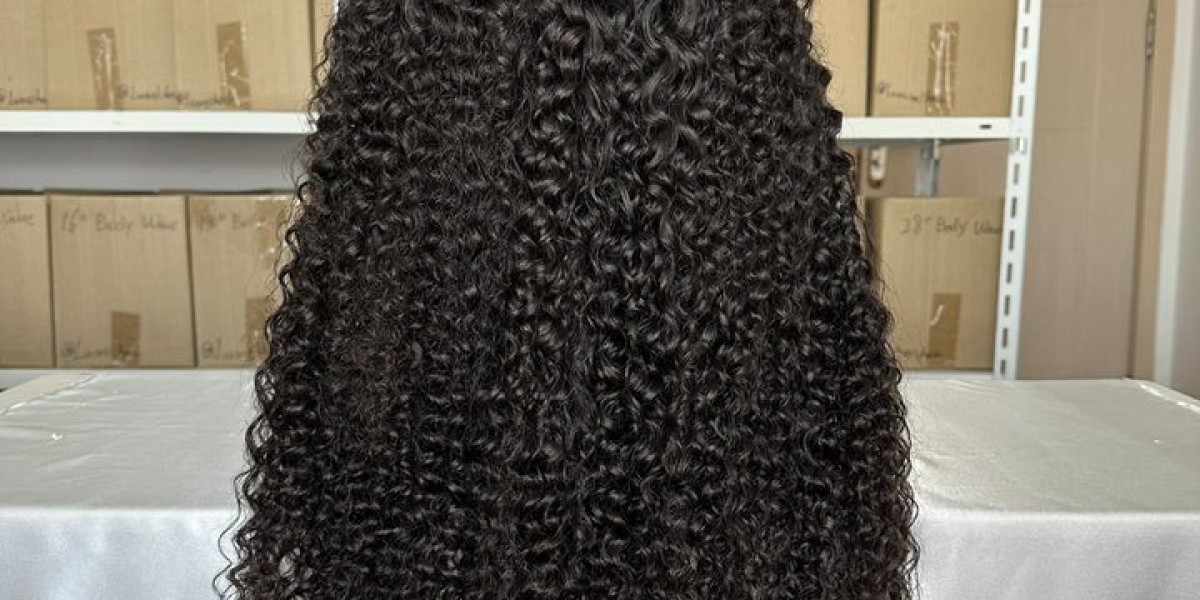Lace wigs have become an increasingly popular way for people to try on their looks, change their style, and even address hair loss or thinning hair. But with so many options, navigating the world of wigs can be overwhelming. A key factor that is often overlooked is the density of a wig - a feature that can significantly affect the overall look and styling potential of a wig.
Whether you're a wig novice or a seasoned professional, this article will equip you with the knowledge to make informed decisions and unlock your full style potential.
What is wig density?
Wig density refers to the number of hair fibers or strands present in the wig. It is essentially a measure of hair thickness or fullness. Wig density is usually expressed as a percentage, the lower the percentage means the thinner and lighter the wig, and the higher the percentage means the fuller and fluffier the wig.
The density range of lace wigs can vary, but in general, you'll find a range of options from 80%(low density) to 150%(high density). The specific density you choose will depend on your personal preferences, face shape, and desired hairstyle.
How does wig density affect your loo?k
The density of your wig can have a big impact on your overall look and style. Let's take a closer look at how different wig densities can affect your look:
Low-density wig
Low-density lace wigs, usually between 80% and 100%, give a more natural, lighter look. These wigs are perfect for creating sleek, straight hairstyles or delicate waves and curls. They are often a good choice for those with smaller or more delicate bodies, as the lighter density helps balance out the proportions.
Medium density wig
Medium-density lace wigs, typically in the 110% to 130% range, can provide greater volume and a more natural look. These wigs are versatile and can come in a variety of styles, from smooth straight hair to bouncy curls and waves. They are a great choice for those who want to look fuller without high-density wigs high-density wig
High density lace wigs from 140% to 150% or higher provide the most dramatic and full look. These wigs are perfect for bold, fluffy hairstyles, such as large, bouncy curls or fluffy buns. They are a great choice for those who want to make a point, or for those who have larger features to balance out the increased volume.
Choose the right wig density.
When choosing the right wig density, there are several key factors to consider:
face
The shape of your face plays an important role in determining the density of the most flattering wig. For example, those with round or heart-shaped faces may find that a less dense wig helps create a more elongated look, while those with square or angular faces may benefit from the added volume of a higher-density wig.
Ideal style
The hairstyle you want will also affect your choice of wig density. If you want a sleek, straight hairstyle, a low-density wig might be a good choice. If you're looking to create fluffy, bouncy curls, a high-density wig may be a better choice.
Personal preference
Ultimately, the density of the wig you choose should be a reflection of your personal style and comfort. Don't be afraid to experiment with different densities to find the density that makes you feel most confident and beautiful.
Wig density and hair texture
The relationship between wig density and hair texture is an important consideration. For example, as fibers are manufactured to a specific thickness, synthetic lace wigs tend to have a more uniform and consistent density. Human hair wigs, on the other hand, can provide a more natural and variable density, as the strands themselves have a natural variation in thickness.
When choosing a wig, you must consider the relationship between density and hair quality. For example, high density synthetic lace wigs may feel heavy and unnatural, while high density human hair wigs can provide a more realistic and larger look.
Custom wig density
If you find that the density of the wig you initially chose isn't quite right, don't worry, there are many ways to customize it. One option is to have the wig thinned by a professional hairstylist, or by carefully cutting or thinning the hair fibers. This helps create a more natural, manageable look.
Another approach is to use lace wigs styling product, such as a fluffy powder or texturing spray, to increase or decrease the density as needed. These products are a great way to experiment and find the perfect balance for the style you want.
Alice
42 Blog posts



